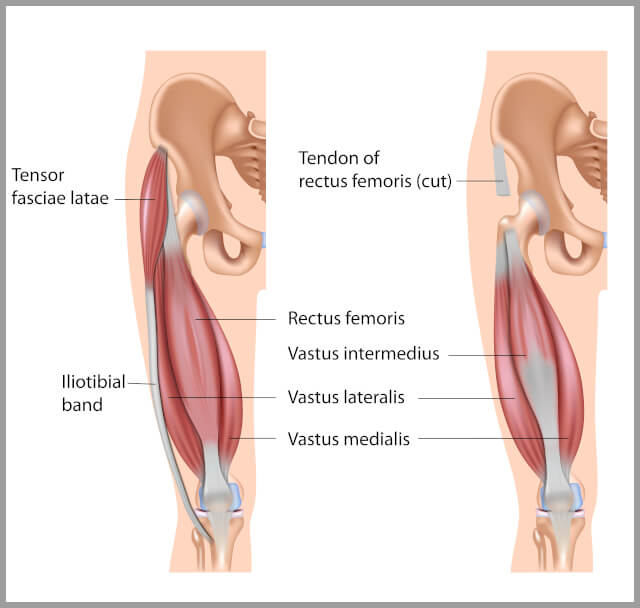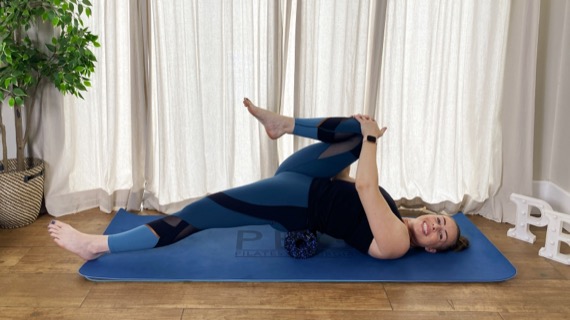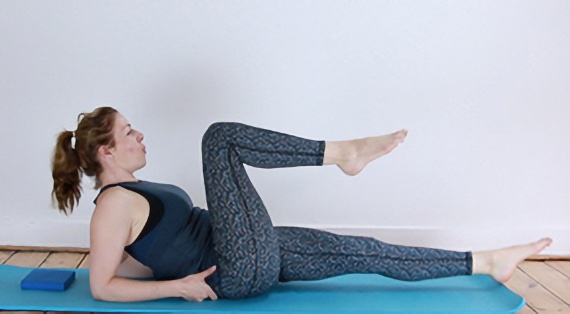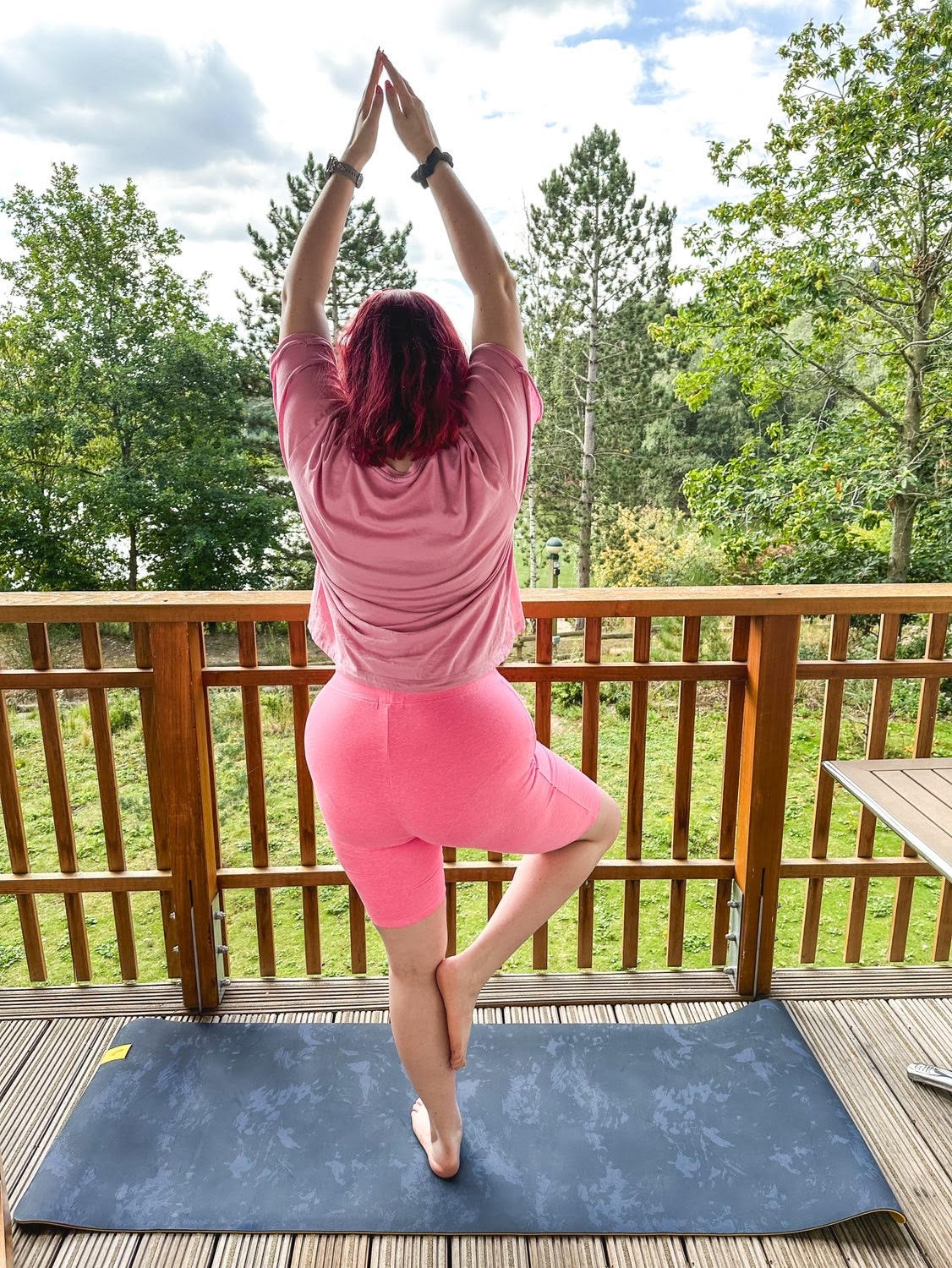Thigh Pain
Front Thigh/Quads
The quadriceps are a group of muscles located over the front of the thigh and assist with straightening the knee. The quadriceps group is made up of four muscles: Rectus Femoris, Vastus Lateralis, Vastus Intermedius and Vastus Medialis.
A tear in a thigh muscle is referred to as a thigh strain and depending on its severity it is classified as a first, second or third grade injury.
- Grade 1: A mild muscle pull or strain - recovery 2-4 weeks.
- Grade 2: A partial muscle tear - recovery 4-12 weeks.
- Grade 3: A complete muscle tear - will require surgery and up to 6months of rehabilitation.
It is thought that the quads, and in particular the rectus femoris muscle, are commonly injured because of their powerful dual action of both straightening the knee and flexing the hip - just like the kicking action. Tendons are the fibrous connective tissue that attaches muscles to bone - inflammation of the tendons is a condition known as tendonitis.
All about Thigh Pain
Causes of Thigh Pain
- Quadriceps Strains / Tears: Overuse or repeated stress on your thigh muscles may cause inflammation of your tendons or tears of your muscles.
- Quadriceps Tendonitis: See our Front Knee Pain page
- Contusion Injuries: This is usually due to a direct blow / trauma to the front thigh muscles damaging the skin and underlying tissue and is common in contact sports such as rugby.
- Iliotibial Band Syndrome: The iliotibial band is a thick band of tissue that runs down the outside of your thigh, from the hip bones to the top of the shinbone. It can become irritated at the side of the knee due to overuse or repeated stress causing iliotibial band friction syndrome (ITBS).
- Femur (thigh bone) stress fractures: Common in young active people where too much pressure/weight has been repeatedly put on the bone, it can cause a stress fracture.
Symptoms of Thigh Pain
- Quadricep muscle tears: Sudden sharp pain that can be accompanied by a 'tearing' sensation. With a minor tear you may be able to continue activities or sport with minimal restriction. However, the pain and tightness may gradually increase following the exercise as bleeding and swelling occurs around the injured muscle.
- Quadriceps tendonitis: Dull pain leading to a sharper pain, stiffness, tenderness and swelling.
- Contusion injury: Pain at the time and site of injury, swelling and bruising, and usually restricted movement and muscle weakness.
- ITBS: For more information, see our iliotibial band page.
- Femur Stress fractures: Tends to develop gradually as a dull ache and worsen with ongoing loading and stress. Often hard to localise and can be felt by the knee.
Thigh Pain Treatment
RICE
- Rest: Stop running, exercising etc.
- Ice: Apply a covered ice pack to the injury for up to 20 minutes every 2 to 3 hours. Do this for at least 3 days and ideally up to a week.
- Compress: Use compression sleeve or Tubigrip.
- Elevate: Elevation minimises swelling. Raise your leg up higher than your heart.
Do watch the PBG information class on Front thigh pain and then try the QuickFix exercise class to learn how to safely mobilise and lengthen the area of discomfort- great for all strains - but for muscle tears ensure you allow time to heal the tear first before stretching this will be 3 weeks post injury.
Free Class: Quick Fix for Thigh Pain

 Physio Tip!
Physio Tip!
ROLL IT OUT!
Assist recovery between workout sessions and training -Try using a foam roller, lie facedown on the floor with the foam roller positioned above your knees. Place your elbows on the floor for support. Roll your body backward until the roller reaches the top of your thighs. Then roll back and forth.
Not suitable in acute phase of injury!
Alert!
Contact your healthcare provider if:
- The injury is severe; you heard a crack and can't bear weight on the leg
- Your symptoms worsen and can be felt at rest
- Your injury isn't healing
- You have sudden tingling or numbness in your leg
- The swelling suddenly gets worse.










